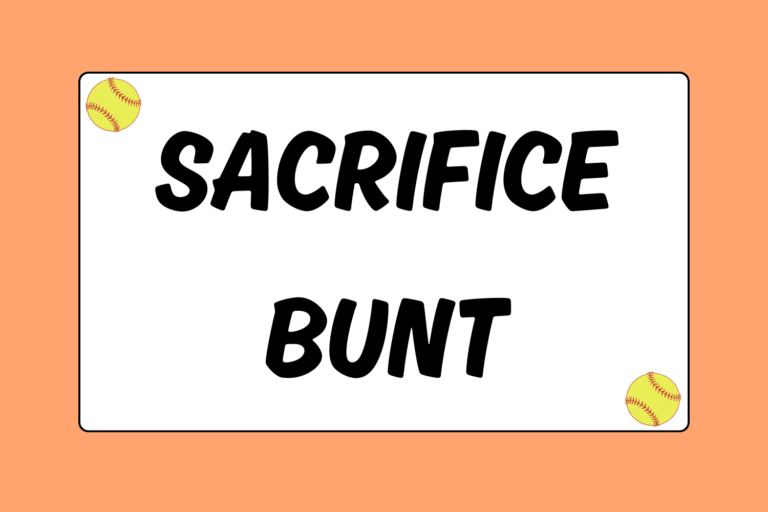A squeeze play is a great way to take the lead in a close game. As a batter, if a squeeze is called your duty is to get the bunt down and protect the runner.
What makes the squeeze play so unique is that the batter is the key to its success. This play forces a lot of pressure on the batter, but it is executable. This guide goes into more detail about your responsibility as the batter in a squeeze play.
Mental Preparation
The first thing a batter needs to do is mentally prepare herself to go after any pitch. Whether the pitch is five feet above the strike zone or rolling in the dirt, you have to put the bat on it.
This concept might seem strange since, from day one, you have been taught to only go after strikes. But think of a squeeze as an elimination of the strike zone — go after everything and anything. The runner on third is going to be running on the pitch, and she needs to be protected by the bunt so she has a chance at the plate.
Know the Sign
Of course, in order to get yourself in the right mentality you have to know that the squeeze in on. You can almost guarantee that the runner knows the squeeze is on, so to miss the sign is extremely dangerous. Imagine you’re running from third base on a squeeze, charging down the baseline, only to dive out of the way of a screaming line drive, or run into the catcher waiting for you with the ball. Missing the sign puts your teammate in jeopardy.
The Bunt
You must get the bunt down. You can make sure this happens by correctly angling your bat at a 45-degree angle across the plate. If your bat’s head is lower than your handle or parallel to the ground, there is a high probability of a pop-up.
If the ball is low, bend your knees to get the ball. If the ball is high, you are going to have to raise your bat to meet the ball, so do it at an angle (this is the only circumstance in which you will ever raise your bat while bunting).
No Pop-ups!
Pop-ups potentially cause two outs. The first out is when a crashing infielder makes an easy catch on your pop-up. The second out occurs when that infielder throws back to third base to double off the runner who couldn’t get back in time. Since runners are going full speed down the base line, they rarely have enough time to stop, pivot, and get back to the bag.
When to Show Your Bunt
In a squeeze you want to show your bunt as late as possible, generally when the pitcher releases the ball. There are two reasons why showing the bunt late is beneficial:
- It prevents the catcher or coach from calling a pitch that is difficult to bunt.
- The infield might be caught off-guard, giving you and the runner a better chance of advancing safely.
You do not, however, want to show your bunt so late that the bat is still moving forward when you contact the ball. This will likely result in much harder contact, which means a less effective bunt.
Which Bunt to Use
In a squeeze, you generally don’t want to drop the bunt in front of the plate. If the ball drops there, the catcher just needs to reach forward, retrieve the ball, and wait for the runner. You want to make it difficult for the defense to get you or the runner out.
A push bunt works great in this situation because the corners will be crashing hard and you can try to push the ball past them. Placing the ball anywhere between the pitcher and the first baseman, or the pitcher and the third baseman would be optimal.
A bunt to the pitcher will only work if the pitcher is slow and/or tired. If the pitcher is slow, it will take more time to retrieve the ball and make the play. By the time the pitcher realizes that no play can be made at the plate, she will probably not have enough time to turn and make the play at first base. This means that both the runner at third and you have a good chance at being safe.
The On-deck Batter
On-deck batters are also involved in the squeeze play. On-deck batters are the coaches at the plate, directing the runners as they cross home:
- If the play is at the plate, the on-deck batter needs to be directing the runner to get down and slide across or around the catcher at home.
- If the pitch is wild and the runner is taking home, the on-deck batter needs to be directing her to either slide or stand-up, depending on whether there will be a play at the plate.
Be an Aggressive Base Runner
After you bunt, sprint to first base and don’t ever slow down. If the infield tries to make the play at the home rather than at first, all attention will be at the plate. That means that the infielders’ eyes won’t be on you. If you are smart enough, you can easily take second base.
As you approach first base, glance at second base. If it is not being covered, take it! A coach might signal you to continue running to second, but more often than not, you need to be aggressive enough to do it on your own.
If you are given the direction to advance to second base, run hard. You can peek at the third base coach on the way to find out whether the base is being covered. Slide or dive accordingly.
Go For It!
A squeeze, though it’s full of pressure, is an extremely exciting play. Seeing a squeeze play properly executed from the batter’s box is a huge morale booster for your team.
Be confident! Remember one thing — a coach won’t ask you to do anything he or she doesn’t think you can do. If a squeeze is called, it’s because your coaches have faith in you, so you should too. Just relax and go for it!





